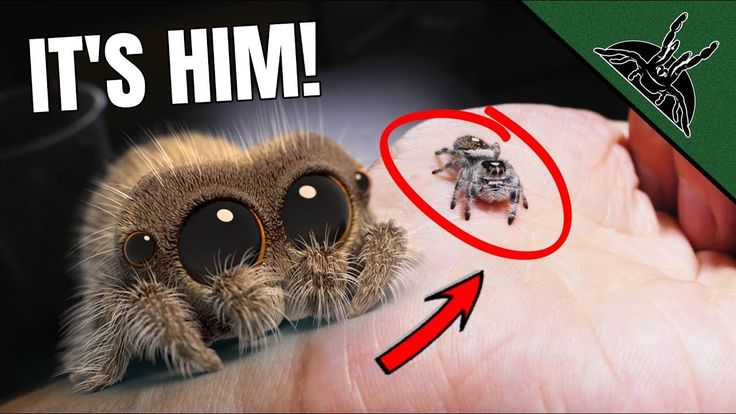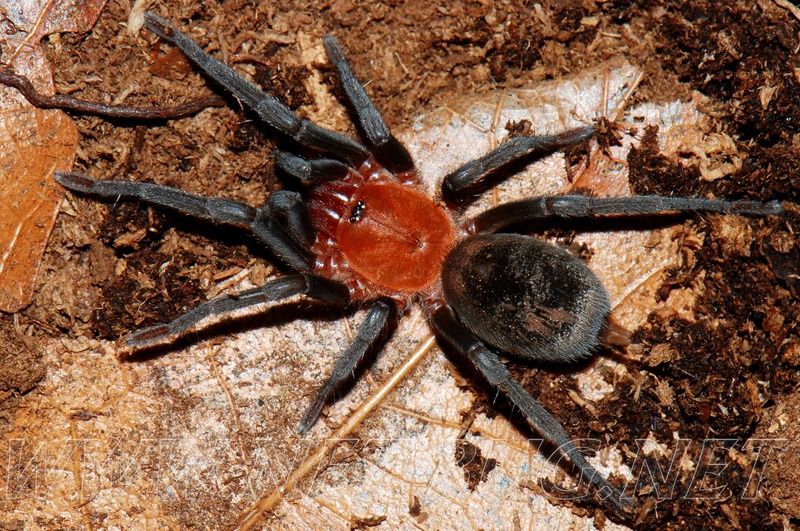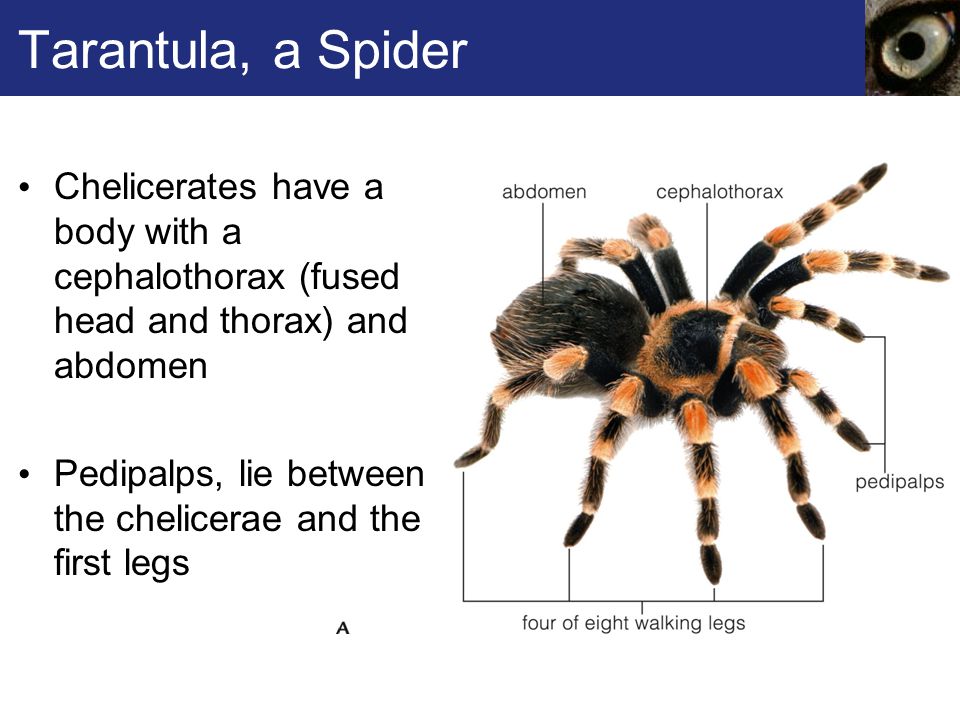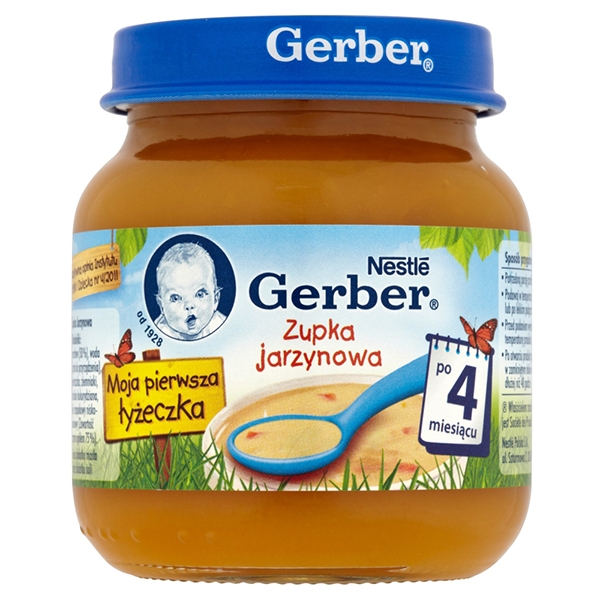How to feed a baby tarantula
How To Feed A Baby Tarantula
Sign up to get a free chapter of my tarantula guide! First Name Email Address
As you may know, I recently got Spidey a baby sister/brother and acquired a captive bred Arizona blonde (Aphonopelma chalcodes) sling from Ill Exotics! And now that I’m raising my first sling, I’m finally going to focus on a question I get a lot: How to feed a baby tarantula?
From what I’ve been learning so far, there are some similarities but also some big differences. Appetite wise, my sling Blinky could not be farther from my Grammostola rosea (chilean rose hair) Spidey. Spidey is well into her adult years (she’s practically a grandmother!) and fasts for much of her life. She can regularly go months without eating anything and is perfectly fine. Even when she does eat, she is a total slowpoke and usually plays with her food before doing anything about it! Blinky couldn’t be more different, this little baby is a hunter and pounces on its food without hesitation!
So what am I learning about how to feed a baby tarantula?
Well, first of all, the size is an issue. You should not give slings food that is too big for them. While giving any tarantula food that is the wrong size will be an issue, baby tarantulas are especially vulnerable and fragile. You can feed a baby tarantula little pinhead crickets, or roaches, worms but they should preferably be smaller than the spider. While some tarantulas may prefer to hunt live prey, some extremely tiny slings can successfully eat pre-killed or pieces of prey.
The frequency is also very different from a grown tarantula like Spidey. While older tarantulas can get away with being fed once per week (or much less), younger tarantulas grow very quickly and need to be fed way more often! Many tarantula owners actually choose to feed them as much as possible to get them out of this fragile sling stage, because many baby tarantulas don’t make it due to their fragility.
One big thing to note about how to feed a baby tarantula is that just as they eat for frequently, they also molt more frequently. This means that you may not have much warning before a molt and you must be very careful not to leave uneaten prey in a sling’s enclosure for extended periods of time, in case your baby tarantula goes into a molt. A molt leaves slings very vulnerable and open to an attack, and prey items like crickets are notorious for munching on anything they can get access to.
Here are some feeding videos you may find useful:
If you want to learn more about tarantulas, feel free to check out my big tarantula guide (I talk tons about slings and other tarantula care topics). You can also get free tarantula tips by signing up for my newsletter or subscribing to my YouTube channel! I release new tips every Tuesday for Tarantula Tuesday! And I also sell some pretty cool tarantula t-shirts, if I do say so myself 😉
By the way, I am in the middle of creating a monthly tarantula magazine – if you’d like to be a part of that, you can visit the magazine’s Patreon page to subscribe or make a submission! You can also contact me at theavenmag@gmail. com for more info!
com for more info!
Featured image via Tarantula Heaven
Like this:
Like Loading...
What do You Feed Tiny Tarantula Spiderlings? – Creepy & Crawly
Feeding tiny tarantula spiderlings can be a daunting prospect due to their diminutive size, and it isn’t rare to get a baby that is reluctant to take down live prey. It’s especially difficult to find whole food items that are small enough for slings if you don’t raise your own feeders.
Tiny tarantula spiderlings can be fed the exact same items as adults; however, you will need to take the size of the prey into account. Pinhead crickets and day-old roaches make excellent feeders. Super small tarantulas of most species will readily scavenge feed, so an easy option to ensure they’re getting appropriately sized meals is to cut the food into smaller pieces. Small sections of mealworms and cricket “drumsticks” (just the hind legs) work great for this.
Do I have to feed spiderlings fruit flies?You are not limited to only feeding young tarantulas fruit flies. In fact, some people in the hobby question whether fruit flies provide adequate nutrients for growing spiders.
In fact, some people in the hobby question whether fruit flies provide adequate nutrients for growing spiders.
I don’t use them often for my slings because I hate dealing with fruit flies, and there are plenty of other suitable prey items for tiny T’s that you can use. However, when I do use them, I’ve come up with a method that works pretty well for me – now I rarely lose any flies during feeding time.
I drill a 3-4mm hole in the container lid of the fruit fly culture and cover it with some painter’s tape when not in use. This makes it a lot easier to pull out just a few flies at a time, as opposed to having all of them rush the top of the container when you open the lid. When a fly crawls out of the hole, I grab it with some extremely fine-tipped precision tweezers, and then it’s ready to be offered to a tiny spider.
What do tarantula spiderlings eat?When you’re feeding small tarantulas, you need to find prey that makes sense in relation to the size of the spider. Don’t offer a one-inch cricket to a sling with a ½” leg span!
Don’t offer a one-inch cricket to a sling with a ½” leg span!
Some spiderlings are reluctant to take down live prey, so pre-killed feeders may need to be left instead for them to scavenge feed upon.
Suitable feeders for spiderlings include any insect that is safe to feed to your pets, like pinhead crickets, newly hatched roaches, small mealworms, really tiny hornworms, and soldier fly larvae.
What can I feed really tiny slings?I typically offer my smallest slings pre-killed food because I’ve noticed that most of them get scared of live feeders. Another reason why I encourage scavenge feeding at this size is that most of the feeders will readily bury themselves in the substrate.
Oftentimes, I won’t have the opportunity to verify that the spider has eaten until hours later because they are shy, and I don’t want any buried live feeders left in the enclosure that can endanger them during a molt.
My go-to options for slings are pinhead crickets with their heads crushed or cut up pieces of mealworms. Really tiny mealworms work just as well as pinheads, so sometimes I don’t bother cutting off small segments of a larger one if there are tiny ones in the cup. I do still crush the head of the tiny mealworms before offering them to small tarantulas.
Really tiny mealworms work just as well as pinheads, so sometimes I don’t bother cutting off small segments of a larger one if there are tiny ones in the cup. I do still crush the head of the tiny mealworms before offering them to small tarantulas.
Another option that works really well for super tiny babies is cricket drumsticks (a.k.a back legs that you’ve pulled off). I’ve raised many small spiders using just the back legs of large crickets when I didn’t have tiny feeders available to me. Remember, it’s important to remove the pieces of food from the enclosure once the spiderling has gotten their fill.
Should I drop the food down the tarantula’s hole?Avoid dropping the prey items down the tarantula’s burrow. If the spiderling wants the food, it will come out to the mouth of its burrow or web tube get it.
Although it may seem like the best way to directly get the food to the spider, there are two main reasons why I do not do this for my slings. If you drop pre-killed food items down the burrow that the tarantula does not end up eating, then you won’t easily be able to retrieve them during spot cleaning. These pieces of dead insects will end up growing a fuzzy mold and should always be removed promptly.
If you drop pre-killed food items down the burrow that the tarantula does not end up eating, then you won’t easily be able to retrieve them during spot cleaning. These pieces of dead insects will end up growing a fuzzy mold and should always be removed promptly.
I don’t drop live food down the burrow because in my experience this ends up being destructive to the tarantula’s home. In the past when I’ve done this the feeder ended up collapsing parts of the tunnel walls.
Additionally, if the spiderling is in premolt and refuses to eat the feeder, but the insect is well protected within the burrow from being removed with tongs, then it poses a risk to the molting spider. I don’t want to have to stress a spiderling just before it molts by rooting around in its burrow to retrieve a feeder.
Should I tong feed my tarantula sling?I don’t recommend tong feeding tarantulas, and it isn’t something that I do myself on a routine basis. Although, many hobbyists do like to tong-feed as it makes it easier to know if the tarantula eats successfully and it can prevent feeders from burrowing in the enclosures (but so can crushing the head before you drop it in).
It is possible for a tarantula to damage their fangs when they strike the steel to take the feeder. Although I have never experienced this, I have had a tarantula break their fang while chewing on a plastic ventilation slat in their cage so I am cautious while using steel tools when I’m working around my collection. I figure if plastic can cause damage, so can steel.
Aside from injuries to the spider, encouraging tarantulas to tong feed is just asking for them to run up the tongs and escape the enclosure or bite the hand holding the tongs. My approach to keeping tarantulas is very minimal. I try to keep our interactions to a minimum to avoid stressing the spider and to avoid bites on my end.
Usually, people startle when a tarantula runs up the tongs and they will likely drop or fling them which can gravely injure the spider. Additionally, a tarantula that grabs the tongs can be surprisingly strong which can also startle the keeper into dropping the tongs.
That being said, this is a nonissue for most spiderlings because the majority will be too shy to take food from the tongs anyway. If you are going to try offering a sling food with tongs, make sure you’re only pinching a tiny part of the prey so that there’s plenty of room left for the spider to grab – and be ready to let go of the feeder as soon as the sling grabs it so that they don’t get spooked by the resistance from the tongs.
If you are going to try offering a sling food with tongs, make sure you’re only pinching a tiny part of the prey so that there’s plenty of room left for the spider to grab – and be ready to let go of the feeder as soon as the sling grabs it so that they don’t get spooked by the resistance from the tongs.
The easiest way to feed really tiny tarantula spiderlings is to have them scavenge feed on dead feeder items. Not only does this ensure that they get a chance to eat every meal, but it also seems to be less stressful for the spiderling.
Many of my really young slings won’t show any interest in hunting live prey and will actively run away from it, which is a stark contrast to how greedily they take pre-killed prey.
I don’t usually run into issues with feeding live prey to slings with a leg span that’s ¾” or larger, but the smaller ones have been hit or miss for me.
Why isn’t my tarantula spiderling eating?There are several factors that may cause a sling to refuse food. For example, if you recently transferred the baby into a new enclosure, then it will take some time for the spider to settle in before it will be willing to accept food.
For example, if you recently transferred the baby into a new enclosure, then it will take some time for the spider to settle in before it will be willing to accept food.
Slings that are premolt, which is the period of time leading up to their molt, will refuse food until after they have hardened from molting. Sometimes, spiderlings are photosensitive and won’t show interest in eating until you turn off the lights.
Some tarantulas are prone to fasting for long periods of time, like species in the Aphonopelma genus. One of my Aphonopelma slings regularly barricades its burrow for a month or two at a time.
Remember, tarantulas can go longer without food than they can water, so make sure the sling has access to a drink if it’s fasting and always remove unwanted food after 24 hours.
How often do you feed baby tarantulas?The frequency that you feed spiderlings depends on how large of a meal you offer them each time and also on the temperature that you keep your spider room. Spiderlings kept in a warmer room will need to eat more frequently.
Spiderlings kept in a warmer room will need to eat more frequently.
Some people offer food twice a week, some stick to once-a-week feedings, and others feed their slings as much as they will take as often as they will take it until they reach the juvenile stage (approximately 1.5”-2” leg span).
If you’re feeding smaller prey items, then it may be appropriate to offer your spiderling food 2-3 times per week. However, if the food is on the larger side, then once a week will be sufficient.
I feed my babies roughly every week, sometimes twice a week and occasionally every week and a half. My feeding frequency varies on how large their abdomen is.
I wait until the abdomen is looking smaller again after their last meal before I offer them more food. It’s usually easy to tell when they’re ready for more because they’re actively coming out of their burrows or webs looking for prey.
Can you feed a tarantula spiderling too much?If the spiderling eats so much that its abdomen starts to resemble a tick, then it just means you need to dial back the food a little bit. Next time, choose a smaller meal for the spider or reduce the frequency of the feedings a bit.
Next time, choose a smaller meal for the spider or reduce the frequency of the feedings a bit.
This is why I wait to offer more food until I see them start to slim down from their last meal. Tarantulas will stop eating when they’ve had enough. The sudden refusal of food is often the first sign that a sling is in entering premolt.
I like to keep spiderlings plump, but not engorged to a point where their abdomen gets shiny. Young tarantulas will not eat so much that they explode, however, spiders that are overfed to the point of a bulging abdomen are an increased risk for rupturing their abdomen if they fall from the top of their cage.
Aside from allowing the spider to burrow properly, preventing a ruptured abdomen is another one of the reasons why keepers put a lot of substrate in terrestrial enclosures.
What happens if my spiderling refuses to eat?It’s not a cause for concern if the spiderling doesn’t take food for a week. If it refuses to eat the food that you dropped in the enclosure within 24 hours, then remove the prey item and try again the next time you’re feeding your spiders.
Just keep repeating this until they’re willing to take food again. If it goes on for longer than a couple of weeks, then I would also recommend trying a different feeder to see if that makes a difference.
Will my spiderling starve if it doesn’t come out of its burrow for months?Many terrestrial slings will notoriously burrow for extended periods of time. Grammastola and Aphonopelma are two genera that are especially known for this frustrating behavior.
If your spiderling has been barricaded in its burrow for a while, then don’t start digging around in the container just to offer it food.
Unless there is a distinct smell of rot coming from the substrate, then your tarantula is fine and it’s just doing spider things.
It will open up the entrance of the burrow when it’s ready to come back out. Disturbing a burrow that the sling intentionally closed risks interrupting the spider during a molt which can end up being fatal.
Should I leave food in the enclosure for my tarantula sling?Don’t leave live or dead prey items in the enclosure if you sling chooses not to eat. It’s always best practice to remove dead prey items so that they don’t grow mold, and live feeders can pose a risk to a molting tarantula at any life stage not just when they’re babies. The general rule of thumb is to remove uneaten food if it hasn’t been touched in 24 hours.
It’s always best practice to remove dead prey items so that they don’t grow mold, and live feeders can pose a risk to a molting tarantula at any life stage not just when they’re babies. The general rule of thumb is to remove uneaten food if it hasn’t been touched in 24 hours.
You only need to give tiny tarantulas one food item at a time. For example, a single meaty cricket leg will be sufficient for a sling with a ¼” leg span.
Don’t drop multiple live feeders into the enclosure with your spiderling. You will most likely end up with a very stressed tarantula that doesn’t touch any of the food because it’s busy hiding from the feeders.
Do I have to pre-kill the feeder items that I give my baby tarantula?You don’t have to pre-kill feeders for spiderlings, many will take live prey without an issue. I watched my Hapalopus sp. Colombia ferociously take down prey many times its size when I first got it as a ¼” spiderling.
However, some may be reluctant to hunt live until they get past one inch or so. A sling’s response can vary with the feeder that’s offered. Some will readily take small crickets, but run from tiny mealworms.
For example, all three of my current Monocentropus balfouri juveniles straight up refused live prey until they hit 1.5” – they would just run into their web tunnels to hide, even if the cricket was tinier than they were.
Pre-killed prey items are better in my opinion for the really tiny babies that are under ¾” because it’s more convenient for the keeper. Additionally, there’s no risk to the young spider, and it’s easy to check to see if the tarantula decided to eat if you have to leave it overnight since the prey will be in the same spot that it was left.
Final Thoughts on Feeding Tarantula SlingsBaby tarantulas are easy to feed as long as you aren’t squeamish about cutting up bugs or pre-killing feeders! Mealworm segments, cricket legs, and other small pieces of feeder insects work perfectly for slings if you don’t have access to tiny whole feeders. Slings will readily eat dead prey items, which makes it simple to monitor whether or not they’ve been feeding as expected.
Slings will readily eat dead prey items, which makes it simple to monitor whether or not they’ve been feeding as expected.
If your sling has closed its burrow, just calm down – there isn’t any cause for alarm, this is natural tarantula behavior. They will open the burrow when they’re hungry again. The same can be said for a sling that’s refusing food. As long as their abdomen is plump and they have regular access to water they are fine.
Resources:
- Fruit Fly Myth
what tarantulas eat in nature, what to feed a spider at home
All spiders are predators. They feed mainly on insects. However, different species have, respectively, a different diet. When keeping a tarantula, you need to know what it eats in nature, as well as what you can and cannot feed it at home.
What tarantulas eat in nature
Since tarantulas are usually small in size, in their natural habitat they feed on small and medium insects, sometimes large ones. Rarely, but it is found that representatives of this genus absorb newborn mice. The main thing is that the victim does not exceed the size of the arthropod itself.
Rarely, but it is found that representatives of this genus absorb newborn mice. The main thing is that the victim does not exceed the size of the arthropod itself.
Important! Contrary to popular belief that spiders don't drink, tarantulas need water.
It is believed that spiders get all the necessary liquid from the prey, but this species needs an additional source of water. They often drink morning or evening dew from plants or their own webs.
What to feed a domestic tarantula
When kept at home, the owner himself selects the diet for the pet. So, you can feed him at home:
- tracks;
- bears;
- cockroaches;
- crickets or locusts;
- beetles;
- mealworm larvae or Zophobos.
The size of the potential victim and the amount of food depends on the size of the spider itself and its age.
Experts advise once a month to give your pet a small piece of beef, in which vitamins and calcium gluconate are mixed.
Important! Do not forget to install a drinking bowl and a bathing container in the terrarium.
How to properly feed a tarantula at home
To avoid various kinds of trouble between your pet and his victim, you need to know not only what to feed the animal, but also how to do it correctly.
Spiders do not eat their prey. They inject poison into it, which dissolves the inside of the insect, making it a nutrient mixture for the arthropod. After waiting a bit, the predator crawls up to the victim and sucks the juice out of it. Therefore, do not forget to remove leftover food from the cage.
Tarantulas like to hunt, so it is better to put the insect alive in the terrarium. However, those insects that can fly out should be stunned in advance.
Also, don't forget that the victim must be smaller than the pet, otherwise it may become prey itself.
How often to feed a spider
Tarantulas can go quite a long time without food. Normally, the frequency of feeding is:
Normally, the frequency of feeding is:
- for an adult - once every 8-10 days;
- for the growing up - twice a week.
Do not forget to watch the molting of the animal: it is undesirable to feed the spider for another 3-4 days after this process.
Usually, having had enough, the tarantula itself stops eating food and generally reacts to the victim in any way. But there are times when a well-fed spider continues to absorb the nutrient fluid. Then it is necessary to forcibly stop feeding. The signal for this will be a strong increase in the abdomen of the animal. If the abdomen reaches 1.5-2 times the size of the cephalothorax, feeding should be interrupted . If, on the contrary, the spider does not eat for a long time, you should not panic.
This is interesting! A case has been recorded where a female Apulian tarantula lived without food for more than 2 years.
What not to feed the tarantula
Despite the fact that in the natural environment the tarantula can eat newborn mice and small frogs, at home, the pet should be protected from this kind of food. This could lead to his death.
This could lead to his death.
Also banned:
- house cockroaches;
- insects from city streets;
- large predatory insects (mantis, other spiders).
It is best to grow spider food at home or buy it from specialized stores.
Wolf spider, South Russian tarantula or Mizgir and his life in the Kuban
"Notebook Krasnodar" continues to talk about animals, birds and insects that live on the territory of the Krasnodar Territory. Earlier we wrote about poisonous spider Karakurt . Now we will talk about his fellow South Russian tarantula.
It belongs to the family of araneomorphic spiders. More often they are also called wolf spiders. They are characterized by a very uncomplicated body shape. It consists of two parts: a large abdomen and a smaller cephalothorax. There are eight eyes on the head. But there are individuals who have both three and six eyes. Everything, according to arachnologists, a lot depends on the ecology, the nutrition of spiders and, of course, heredity. Due to the fact that they have four pairs of eyes, they can provide a view of almost 360 degrees.
Due to the fact that they have four pairs of eyes, they can provide a view of almost 360 degrees.
The body of the South Russian tarantula is covered with small black-brown hairs. Its color also depends on some circumstances. One of which is the environment. However, there is one distinguishing mark by which this spider can be distinguished from others. He has a black spot on his cephalothorax, which is very similar to a skullcap.
Mizgir has four pairs of legs, which are also covered with small hairs. It is due to their presence that the area of \u200b\u200bsupport increases during movement. These hairs also perform the function of hearing and help to hear the approach of prey.
He also has powerful mandibles. With their help, the spider bites its prey. They have ducts for poison.
The length of the male is about 2.7 cm, and the female is slightly larger - from 3 to 3.2 cm. The weight can reach up to 90 grams. On the abdomen they have arachnoid warts with a thick liquid, which, solidifying in the air, turns into a cobweb.
But it is difficult to call a South Russian tarantula a good family man. He is essentially a loner. They "communicate" with their relatives only at the time of the mating season. And if males still tolerate females, then there is definitely no “male friendship” in this company.
They live in their own burrows, which are located at a depth of up to 50 cm. Tarantulas are real homebodies. They even prefer not to go far for food. They seal their hole with a web, which becomes a trap for small insects.
Mizgir is quite a dexterous hunter. If they only notice the slightest fluctuation of the web or the shadow of their future "lunch", then they make a powerful jump, grabbing and biting the victim, injecting poison and depriving them of the ability to resist.
Their life expectancy is no more than three years. And females live a little longer. In winter, they are not active - they sleep, carefully sealing the entrance to the mink with grass and cobwebs. As soon as warm days come, suspended animation stops.
As soon as warm days come, suspended animation stops.
Mice, insects, frogs should, of course, be wary of the wolf spider. But it won't do much harm to humans. At least there will be no death. A tarantula can cause severe pain to a human. Swelling will appear at the site of the bite. Only an allergic reaction is very dangerous, so it is best to take antihistamines with you when hiking and on excursions to places where tarantulas live.
It is worth noting that the wolf spider never attacks first. He is always on the defensive. Plus, he is afraid of those who are larger than his size. However, if he decided that he was in danger, he would definitely bite.
South Russian tarantulas live in central Russia. They love an arid climate, but at the same time, there must be water bodies nearby or groundwater close to the surface. This type of spider can be found in the Crimea, the Krasnodar Territory, the Oryol, Tambov regions, Astrakhan, and the Volga region.
The breeding process of mysigreys begins at the end of summer. Males lure females with special movements, and if the “lady” answers, it means that she is ready for mating games. Unfortunately, at the end of intercourse, the female kills her partner if he fails to escape.
Males lure females with special movements, and if the “lady” answers, it means that she is ready for mating games. Unfortunately, at the end of intercourse, the female kills her partner if he fails to escape.
After the female makes a cocoon from the web, in which she lays ripe eggs in the spring. She is able to lay eggs almost immediately, and then carry a cocoon with her attached to her abdomen, waiting until the babies are formed - spiderlings. Very young spiders can still live with their mother on her abdomen for some time. She helps them get food. One pair can have up to fifty cubs. As soon as the babies become able to survive on their own, the mother begins to tear them off the abdomen with her paws, scattering them away from her own home.
Despite its terrifying and frightening appearance, the tarantula can become your pet. However, this requires certain conditions.
A terrarium or an aquarium with a lid can become a home for a mizgir.











